When I first started painting, I worked solely from sketches done on location, but as my paintings became more complex and I started painting cityscapes, photos became more expedient. I used my 35mm camera with a 300 mm telephoto zoom lens for many years. Now I use my cell phone almost exclusively.
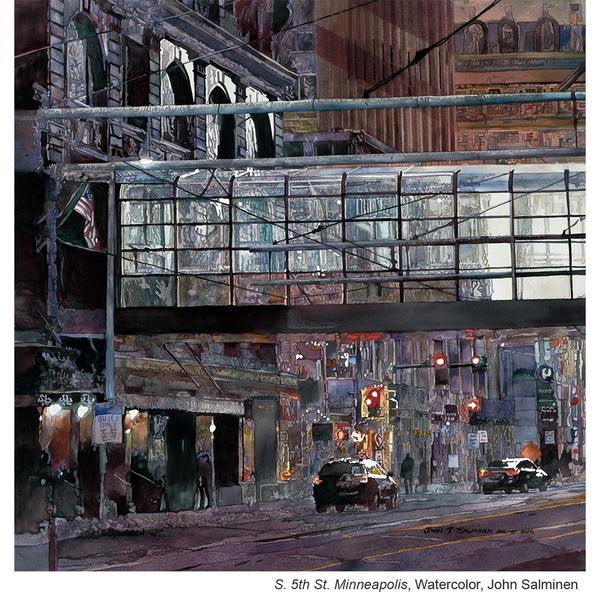
I look for composition first and foremost as I frame my shots, knowing that I can always change the composition by adding, moving, or omitting objects and by changing the quality of the light or the time of the day. I use my photo references to do a detailed drawing on my Arches 140-lb. cold pressed paper, choosing this paper because it stands up to aggressive lifting, taping, and scrubbing. At this point, I look closely at the drawing and come up with a plan, according to the demands of the subject. I determine the order that I need to apply washes, often working from the farthest to the closest areas. Before I begin to paint I mask anything I need to protect.

As the painting progresses, I frequently stop working and put the painting up to study the results from a distance. Sometimes the painting will indicate the need to rethink my game plan as images and patterns of value evolve. I feel it’s important to listen to what the painting has to say as it often makes helpful suggestions.
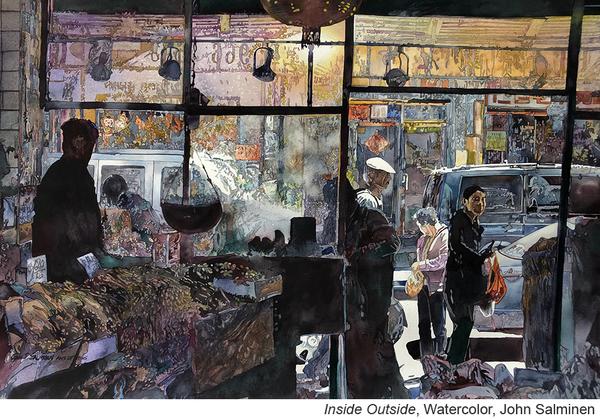
I paint with a range of brushes from a 3-inch square to small pointed #4s. I also employ hake brushes to blend and soften edges and passages. When I want to lift specific shapes, I place 2-inch hardware or lumber yard masking tape on the painting and cut the shape out of the tape using an inexpensive snap-cutter. Next, I use Mr. Clean Magic Erasers (must be ‘original’ or double strong original) soaked in water and squeezed out to gently rub the area until the value I’m after is reached.
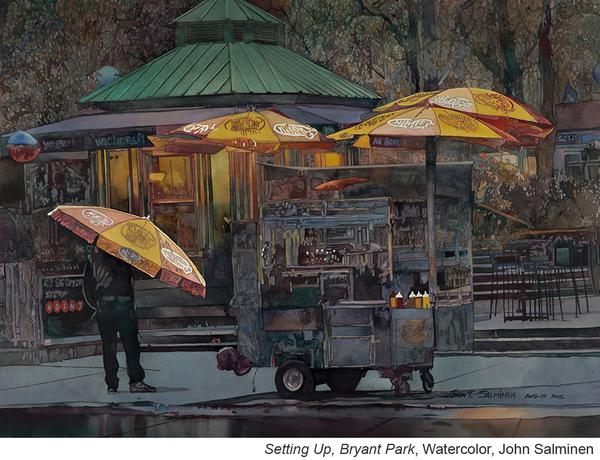
When the painting is nearly complete, I again look at it from a distance, searching for final value adjustments to help prioritize the most to least important areas. I can then make subtle value changes using the Pat Dews mouth atomizer.
ORGANIZING WATERCOLOR PAINTINGS
I enjoy the organizational challenge a painting presents. I try to use my composition to lead the viewer through the painting, directing their journey from the least important parts to the most significant. To do this, I must carefully determine which parts to emphasize, making sure I don’t confuse the viewer with too many side-trips and blind alleys. I arrange the placement of both value and detail. Higher contrast draws the eye while closely related values tend to recede. Sharper detail also gains importance and attracts the viewer. When I plan the arrangement of these elements it helps me determine how to proceed through the painting process.
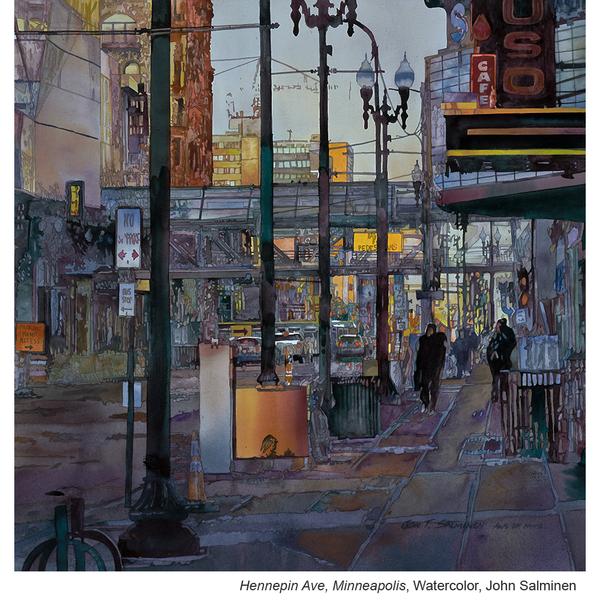
USING LIGHT AND SHADOW
I try to create mood and atmosphere in my work. I have found that value is the design element that best replicates the effects of light and shadow. A glow is established by gradually shifting the value in the area from light to dark. As the lightest values subtly shift to increasingly darker values luminosity is created. This can be enhanced by temperature shifts as well but color and temperature alone do not create a luminous glow. Even black and white value studies can ‘glow’.
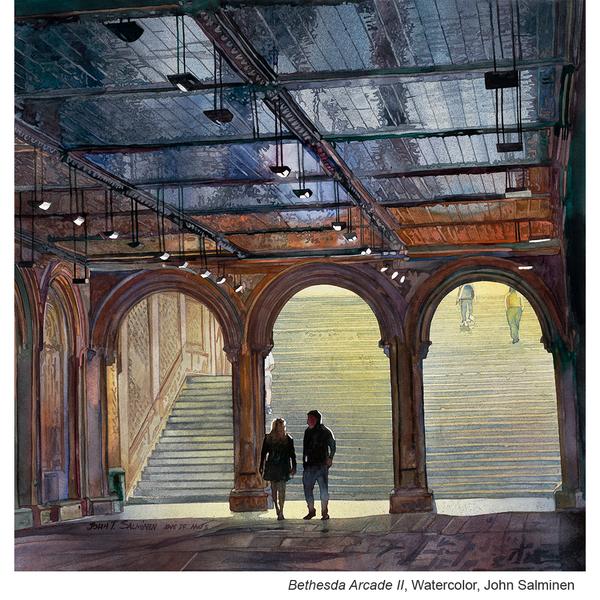
We perceive our world through our awareness of the subtleties of light and shadow. As artists, we recreate those subtle relationships with value. I believe I still have a lot to learn about value and this is one of the challenges that keeps me excited about the medium of watercolor.
John Salminen earned his Bachelor’s Degree and Master’s Degree in art from the University of Minnesota. He lives and works in Duluth, Minnesota. John teaches workshops, makes presentations and participates in painting events around the world. He has two videos with Creative Catalyst Productions including “A Designed Approach to Abstraction” and “Urban Landscape in Watercolor.”



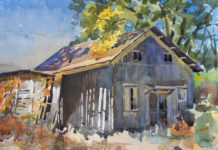




Thank you for these tips. You’re a wonderful instructor. I often wonder how you paint such complex pieces but keep the focal point clear.
Great stimulation to a new world of watercolour! You drew me in with your story/ pictures!! Just the same experience as I have done through out my life!! Your pictures drew me in deep inside of each one!! I wish there were more to see / study!! Great !!!Its unbelievable that was done in watercolour!! Superb !!
I enjoyed your feelings and instructions. A few years back some of my friends signed up for some of yr workshops in nj and I was jealous that I did not at the time. So I enjoyed reading these informative thoughts and processes in the comfort of my home. Thank you